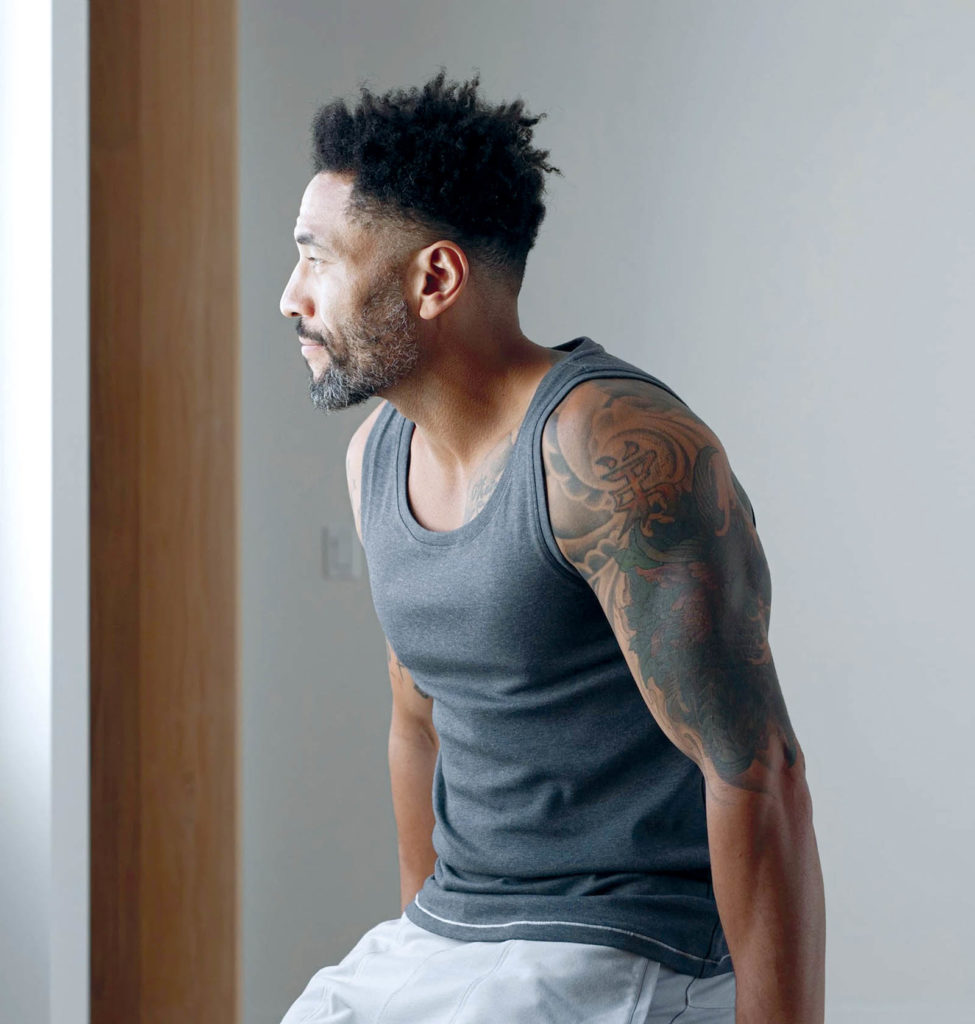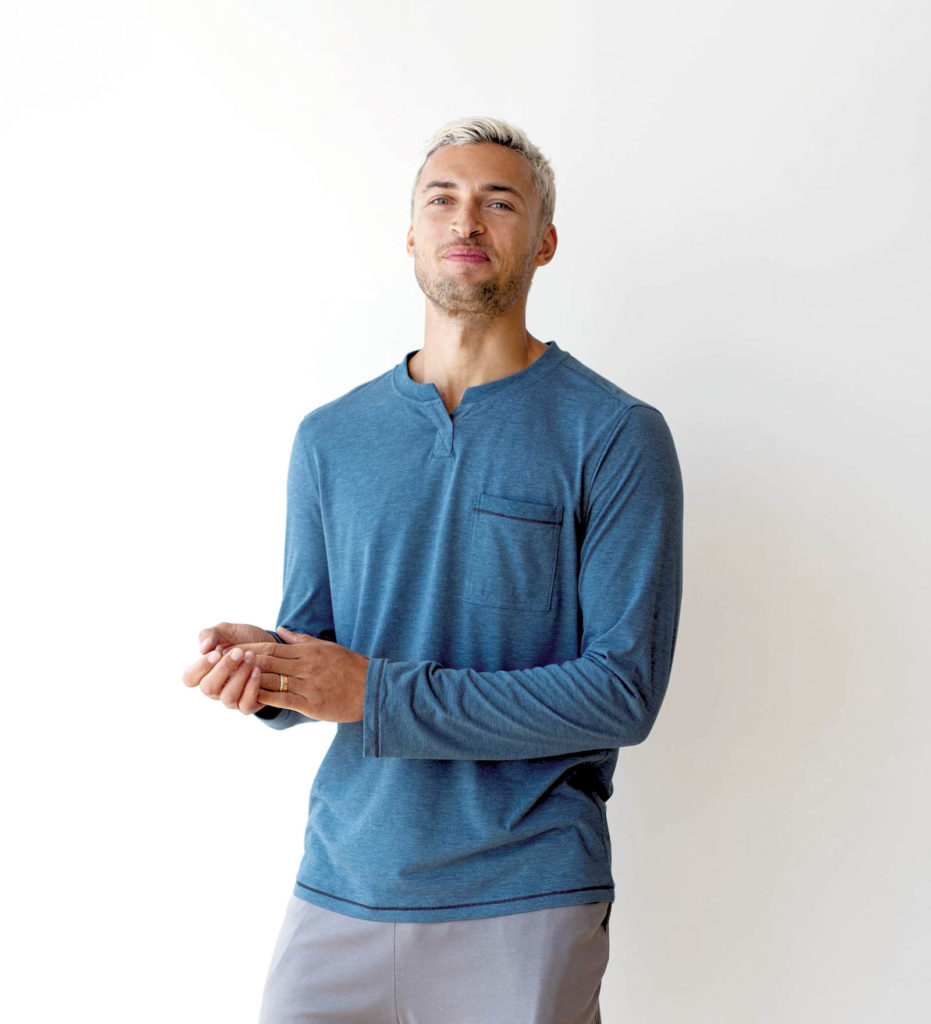
Most of us still can’t (realistically) answer the siren song of working in pajamas. However, we’re certainly becoming au fait with the comfortable, functional clothing that can help us power through long, testing days at an essential workplace or hours of Zoom meetings for those working from home.
At the beginning of the COVID-19 pandemic, our attire preferences were clearly driven by a desire for ease and comfort, and athleisure brands capitalized on that demand. Many months on, however, we’re moving to a deeper understanding of what clothes can do for us. Beyond instilling a sense of comfort, they can provide more benefits for our well-being than we ever thought possible.
With forward-thinking athleisure brands developing comfort-centric textile designs that respond to the way we work and play through COVID-19, these clothes are poised to truly transform our daily lives.
Emerging responsive textiles
The responsive textile story starts with athleisure.
Born out of consumer demand for clothes that were fashionable but flexible, traditional sports brands such as Puma and adidas began to turn from hard-core performance wear to more lifestyle- and fashion-oriented choices. The market has grown astronomically: Now, smaller athleisure-first brands have entered the arena, bringing with them the values of health and wellness and the sustainable practices that consumers prioritize.
Enter responsive textiles. These are textiles (or sometimes textile coatings) that interact with their environment by responding to it. The response is either a noticeable change in the material itself (for example, shape-changing) or a physiological reaction in the wearer (for example, increased local circulation and cellular oxygenation). To put it in layperson’s terms, rather than clothes you do something in, these are clothes that do something for you.
A storm of factors—the evolution of athleisure, the reemergence of performance-driven workout gear, and the disruption of the pandemic on our routines—has opened up an opportunity for responsive textile design. Responsive textiles bridge these two popular categories to offer something comfortable and stylish—but with the added power of technical performance characteristics.
The category is still emerging, and a large part of getting responsive textile design out into the mainstream is educating the consumer on its value. The concept of a smart textile fits into many categories beyond apparel—crossing over from performance to science to wellness to fashion and back again. The magic of a responsive textile is that it can be all of these things at once.

What’s next for design?
There’s a clear story playing out with both remote and essential workers and responsive textile design. People are leading lives where transitions are tricky or nonexistent, and we need our fashion choices to help us make those necessary leaps.
Consumers first need to understand and believe that they can really put an item of clothing on and derive benefits that go beyond looking great. Many people are skeptical about technology once it gets close to their personal lives. They hear “infrared” or “electromagnetic radiation,” for instance, and their minds jump to conclusions that are unsupported by scientific understanding. Even if consumers reach the point of belief, is a smart textile worth the extra cost to them? Are they aware enough of the benefits to take that pricier leap?
Now, COVID-19 has tackled some of these consumer awareness and perception barriers by introducing lifestyle changes that could make customers more receptive to responsive textile technology. Health and wellness are increased priorities, and there’s a heightened understanding of the value of oxygenation. Plus, the growth of athleisure sales tells us that consumers now clearly understand the value of clothes that serve a dual purpose (style and performance, in this case) and are willing to pay the extra cost.
The data bears this out: According to new research by Mintel, adults are feeling motivated to set goals for themselves in order to take control of their mental and physical well-being. This includes exercising more and spending more time in outdoor spaces. In short, we’re beginning to see a market ripe for responsive technology, and a significant set of consumers are willing to pay more for something that has tangible wellness value.

Adding value
The advent of athleisure a few years ago took brands to a new place conceptually. They understood that combining fashion and performance was possible—and more so, that it was desired by the consumer. We can make something that looks good and provides some other value. That value could have multiple surprising meanings. Could our clothes save the planet? Could our clothes calm us down? Tell us when we need to eat or sleep? Could they help us become a better version of ourselves?
With the incredible explosion of athleisure wear, designers will become increasingly experimental in their choices of materials as well as their purpose. And as the cost of adding these new components decreases, more advanced functionality can (and will) be built in.
Canadian outdoor apparel brand Arc’teryx has already developed a menswear line with climate-control features. The brand’s fabrics respond to light, water and wind, giving the wearer the ability to handle an increased range of physical activities in the wild as well as everyday work settings. Additionally, today’s responsive textiles can already increase local circulation and cellular oxygenation, resulting in stronger performance, faster recovery and better sleep.
With consumers adapting to the post-COVID work setup, they need ways of forging their own personal routine. A critical part of this is a wardrobe they can trust and experiment with—one that makes them feel that they can seize the day, even if it looks a little different.
Seth Casden is the CEO and co-founder of Hologenix, a material sciences company dedicated to developing products that amplify human potential. Celliant©, its flagship product, is a responsive textile using infrared technology and is clinically proven to temporarily increase local circulation and improve cellular oxygenation, resulting in stronger performance, faster recovery and better sleep. The FDA has determined that Celliant products are medical devices, as defined in section 201(h) of the Federal Food, Drug, and Cosmetic Act, and are general wellness products. Before founding Hologenix in 2002, Casden earned a degree in business administration and worked in private equity. His mission is to innovate responsive textiles that improve the quality of people’s lives.
 TEXTILES.ORG
TEXTILES.ORG


